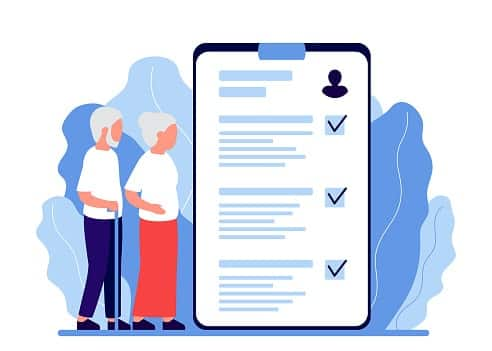What is telehealth coverage?
Telehealth insurance coverage will pay for doctor visits that are done remotely. This may be over the phone, via a video call, or through other remote services.
While most insurance companies have some coverage for telehealth visits, state laws can affect how those visits work and what type of services and providers you can access remotely.
State laws regarding telehealth insurance
Telehealth state laws are inconsistent. All 50 states have some form of health insurance reimbursement for live video. However, only 21 states have reimbursement for remote patient monitoring, says Amber Moss, director of Benefit Services for Iscential Inc.
"It's not as simple as requesting a virtual appointment with your doctor," she says. "Most states require physicians to be licensed to practice telehealth in the originating site's state, while others require the provider to have a valid license in the state where the patient is located."
So, even though you and your physician may want to schedule a telehealth session, it may not be allowed in your state or area.
Richardson adds that each state's medical board governs telehealth rules. The regulations shaping how a clinician performs telehealth vary widely.
"The medical boards also regulate the type of technology needed in the states. For instance, in Maine and Connecticut, you must see the patient via video as a simple audio phone call will not meet the minimum requirements for a telehealth visit," Richardson says.
Tom Conroy, CEO/co-founder of MedSign, says some states have parity laws that require insurance companies to reimburse at the same rate as in-person care for services provided.
"However, this is not nationwide. For this to become a standard across the country, the government needs to sit down with the major insurance firms to work out an agreement for telehealth hardware and services as well as for payments to medical professionals," Conroy says.
The Federation of State Medical Board offers a thorough review of telehealth laws and restrictions by state.
Which insurance companies cover telehealth?
All private health insurance providers have their own telehealth reimbursement rules.
"The big five carriers -- Blue Cross Blue Shield, United Healthcare, Cigna, Aetna and Humana -- all offer some form of coverage for telehealth services. But options may vary based on specific plan selections, so it's important that you understand what's covered under your specific plan," Moss says.
Richardson says that most preferred provider organization (PPO) plans allow telehealth visits. On the other hand, many health maintenance organization (HMO) plans haven't adopted telehealth due to the payment structure with physicians. In that case, the plan may contract with a telehealth company. So, you’d get telehealth services through the company rather than your doctor.
As always, you need to verify if the provider is within your plan’s network and the costs associated with the visit.
"Also, find out how to set up your telehealth services. Most insurance member portals will have instructions on how to do this. For example, there may be an app available for download and a verification process may be required," Moss says.
Medicare and telehealth
Original Medicare covers most telehealth appointments.
"Currently, Medicare patients may use telecommunication technology for office or hospital visits and other services that generally occur in person. These include virtual check-ins with your practitioner using phone services or other devices and e-visits via an online patient portal," Moss says.
Medicare provides a list of covered telehealth services.
"Note that with a telehealth visit, you'll have to cover the 20% co-payment because Medicare looks at telehealth appointments as if they were regular appointments," says Jordan Shanbrom, an independent life insurance broker with California Life Coverage.
Also, Richardson cautions that Medicare telehealth protocols are rigid, and not all Medicare providers offer telehealth services.
That said, you may be eligible for more telehealth services if you have a Medicare Advantage plan. The Centers for Medicare and Medicaid Services allows Medicare Advantage insurers to offer expanded telehealth benefits. You need to check with the individual plan to see what telehealth is covered.
Medicaid and telehealth
Medicaid often provides access to telehealth services. However, state regulations vary.
"States have made adjustments in key areas of telehealth in response to the pandemic, including expanding the Medicaid populations and technologies that can use telehealth," Moss says.
However, you may be restricted by whatever is the most economical for the provider.
"If it is more cost-efficient to see your doctor in person, Medicaid will not cover the telehealth appointment. Overall, there are restrictions on whether or not Medicaid will cover a given telehealth session based on efficiency, cost and availability," Shanbrom says.
The Centers for Medicare and Medicaid Services offers a telehealth toolkit. To confirm if Medicaid will cover your telehealth visit, check out the tool kit or call 800-335-8957.
What to do if your health insurance company denies a telehealth claim
To avoid being declined, it's best to review your plan documents before scheduling or completing a telehealth appointment.
Shanbrom says you can appeal a claim denial with the insurer.
"Typically, the insurance company will request that you prove that the telehealth services were covered or prove that it was necessary despite the cost,” Shanbrom says.
Moss adds that each provider has a specific appeals process in the event of a claim denial.
"Reach out to the carrier directly to understand the proper next steps to resolving any issues," Moss says.
Alternatively, "seek out other insurance companies that provide the telehealth services, as there are many health insurance companies that provide telehealth," Conroy says.
Health insurance finder tool

COBRA
Learn more about COBRA
How much is your annual household income?
How many members are in your household?
Medicare
Medicare costs vary depending on which option you choose.
Learn more about Medicare costs.
Medicaid

Parent's employer-sponsored health insurance

Spouse's employer-sponsored health insurance

Employer-sponsored health insurance

Preferred-provider Organization (PPOs)
Preferred-provider organization (PPOs) plans are the most common type of
employer-based health plan. PPOs have higher premiums than HMOs and HDHPs, but
those added costs offer you flexibility. A PPO allows you to get care anywhere
and without primary care provider referrals. You may have to pay more to get
out-of-network care, but a PPO will pick up a portion of the costs.
Find out more about the differences between plansHealth maintenance organization (HMO)
Health maintenance organization (HMO) plans have lower premiums than PPOs.
However, HMOs have more restrictions. HMOs don't allow you to get care outside
of your provider network. If you get out-of-network care, you'll likely have to
pay for all of it. HMOs also require you to get primary care provider referrals
to see specialists.
Find out more about the differences between plansHigh-deductible health plans (HDHPs)
High-deductible health plans (HDHPs) have become more common as employers look
to reduce their health costs. HDHPs have lower premiums than PPOs and HMOs, but
much higher deductibles. A deductible is what you have to pay for health care
services before your health plan chips in money. Once you reach your deductible,
the health plan pays a portion and you pay your share, which is called
coinsurance.
Find out more about the differences between plansExclusive provider organization (EPO)
Exclusive provider organization (EPO) plans offer the flexibility of a PPO with
the restricted network found in an HMO. EPOs don't require that members get a
referral to see a specialist. In that way, it's similar to a PPO. However, an
EPO requires in-network care, which is like an HMO.
Find out more about the differences between plans
Learn more about individual insurance plans
FAQ: Telehealth
How much is a telehealth visit with insurance?
It depends on your plan, but many plans bill it the same way as a regular office visit, at the same copay. Check your plan to be sure.
How does a telehealth appointment work?
How your visit works will depend on the provider. You will be sent instructions ahead of your appointment to ensure you know how to do a telehealth visit with that provider.
Can I do telehealth on my phone?
Yes, as long as your phone supports the technology required for the telehealth visit.












